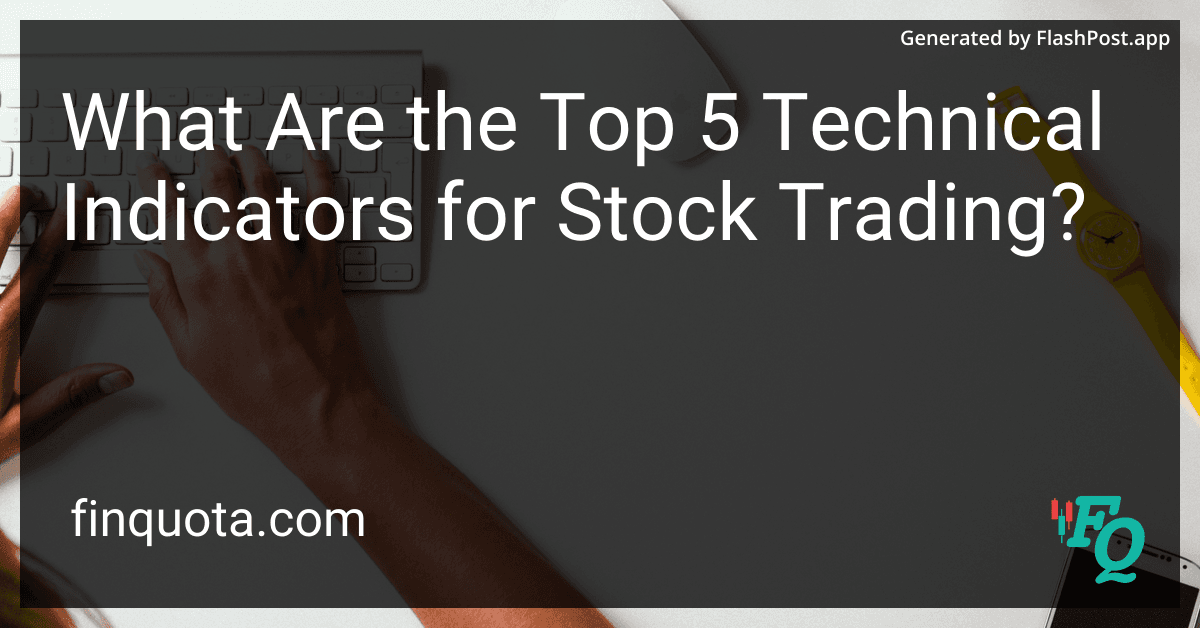- Home
- Blog
Stock and Crypto Trading Blog
Your go-to blog for mastering stock and crypto trading. Discover beginner-friendly guides, expert advice, and the latest updates from the trading world.

What Is the Best Indicator for Day Trading?
Day trading requires quick decision-making and precise market analysis. While no single indicator guarantees success, some are particularly effective for identifying trends, momentum, volatility, and entry/exit points. In this guide, we’ll explore the best trading indicators for day trading and how you can use them to improve your trading strategy.

How Do Bollinger Bands Work in Technical Analysis?
Bollinger Bands are one of the most widely used technical analysis tools in stock trading. Developed by John Bollinger in the 1980s, they provide a visual representation of a stock's volatility and price levels, helping traders assess market conditions. In this article, we'll explore what Bollinger Bands are, how they work, and how to effectively use them in your trading strategy.

How to Calculate RVOL for a Stock?
Understanding and analyzing stock market trends can be quite challenging, but with the right tools and indicators, investors can make informed decisions. One such tool is Relative Volume (RVOL), which provides insight into how active a stock is compared to its usual trading volume. RVOL is especially useful for traders who want to identify unusual price movements, breakouts, or reversals based on volume.

How Often Do Day Traders Lose Money?
Day trading is often seen as an exciting way to make quick profits, but the reality is far different for most traders. A significant percentage of day traders lose money, and understanding why can help aspiring traders avoid common pitfalls. In this article, we'll explore how often day traders lose money, the reasons behind their losses, and strategies to improve success rates.

How to Analyze Stocks Before Buying?
Investing in the stock market requires careful analysis to make informed decisions and maximize returns. Whether you're a beginner or an experienced trader, knowing how to evaluate a stock before buying is crucial. This guide will walk you through the key steps to analyze stocks effectively.

What Is the Difference Between Leading and Lagging Indicators?
In the world of stock trading, one of the most important aspects is analyzing market data to predict future price movements. Traders often rely on technical indicators to make these predictions, which can be categorized into leading and lagging indicators. Understanding the difference between the two is crucial for improving trading strategies and making informed decisions. Let’s break down both types of indicators to help you get a clearer picture.

What Are the Top 5 Technical Indicators for Stock Trading?
Technical indicators are essential tools for traders looking to analyze price trends and make informed trading decisions. These indicators help traders identify momentum, volatility, and potential entry or exit points. Below, we explore the top five technical indicators used in stock trading.

How Often Does the Stock Market Crash?
Stock market crashes are often viewed with fear and uncertainty. The dramatic drops in prices can wipe out billions in market value in mere hours. But how often does the stock market actually crash? And should you worry? Let’s break it down, explore the history, and offer smart ways to prepare and thrive during turbulent market times.

What Affects the Price of Bitcoin?
Bitcoin, the world’s first and most popular cryptocurrency, has experienced massive price swings since its inception. But what exactly causes these changes in price? Whether you're a seasoned investor or just curious, understanding what affects Bitcoin’s value is key to navigating the crypto market. Let’s dive into the top factors that move Bitcoin prices.